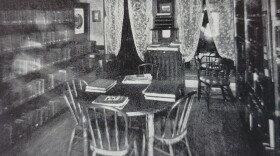The New Year’s celebration is one of the world’s oldest traditions. In ancient Mesopotamia the New Year arrived on the first full moon following the vernal equinox – a day with equal light and dark. For the ancient Egyptians, the New Year arrived with the helical rising of the star Sirius which marked the annual flooding of the Nile.
It was Julius Caesar who gave us the tradition of a January 1st New Years. Originally, the Roman New Year fell on the vernal equinox, but the 10-month Roman calendar was inaccurate and over the years fell out of sync with the solar cycle. Caesar revised the calendar, added two months, and decreed January 1 as the first day of the year. He did so to honor the god Janus, the Roman god of beginnings. Janus had two faces, which enabled him to look back to the past and forward to the future.
In Wisconsin, the Anishinaabe counted years from winter to winter, so before the coming of Europeans to the Northwoods the New Year began on the full moon after the winter solstice.
When the earliest explorers arrived in North America, they brought the Western tradition of New Years with them. However, because the Julian Calendar allowed the solar year to drift, the New Year was falling in March. It was not until the Gregorian Calendar was adopted in 1582 that measurement of the solar year stabilized, and New Year’s Day consistently fell on January 1st.
People living in the Northwoods have celebrated New Year’s Eve and New Year’s Day from the beginning. While New Year’s Eve is a time for parties and other festive activities, not everyone in the Northwoods gets to celebrate on that day because one thing that has not changed over time is that some people must work. The heart and arteries of any modern town or city must be kept beating for the rest of us to enjoy the holiday.
For example, looking at the people who had to work on New Year’s Eve in 1948 tells us how much society both has changed and remained the same. In 1948, the electric utility kept a full staff of workers on hand to ensure that the lights stayed on. Likewise, the sheriff, police, and fire departments all stayed on alert throughout the night. A full compliment of doctors and nurses ensured that St. Mary’s Hospital was ready for anything that might come its way as people celebrated the arrival of 1949. Also, over 60 bartenders and uncounted wait staff worked to serve drinks in Rhinelander that night.
Six men manned the paper mill on New Year’s to guard the plant and to maintain the steam and power units. The railroads retained a full crew of yard workers on New Year’s while the telephone company increased its switchboard operators from the usual one to four. There was a telegraph operator on duty and a mail clerk. There were also bell ringers to toll in the New Year as worshipers arrived for midnight services.
Some New Year’s tasks no longer exist, while others have taken their place. But a Happy New Year to those who work to ensure an enjoyable holiday for the rest of us.
I’m Gary Entz and this has been a WXPR Northwoods Moment in History









